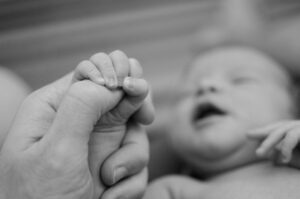What is severe combined immunodeficiency (SCID)?
Severe combined immunodeficiency (SCID) is a primary immunodeficiency disease characterized by little or no immune responses. This results in frequent recurring infections with bacteria, fungi, and viruses. SCID has sometimes been informally called “bubble boy disease” because patients are so vulnerable to infectious diseases that some, like David Vetter or “bubble boy,” have been confined to a sterile environment. Those with SCID have an immune system so highly compromised that it is considered nearly absent.What are the symptoms of severe combined immunodeficiency (SCID)?
SCID is associated with recurrent viral infections and causes several hospitalizations before it is officially diagnosed. One unusual infection that can be present with SCID early on is pneumocystis pneumonia. Other symptoms (generally in infants) include:- Frequent and severe respiratory infections
- Poor growth
- Rashes that look like eczema
- Chronic diarrhea
What causes severe combined immunodeficiency (SCID)?
The most common form of SCID, affecting nearly 45% of cases, is due to a mutation in a gene on the X chromosome that encodes a component shared by the T-cell growth factor receptor and other growth factor receptors. Five more types of SCID for which the genetic cause is known are due to mutations in genes that encode proteins necessary for the development of the immune recognition receptors on T- and B-lymphocytes. These are all inherited as autosomal recessive traits. There are likely other SCID-causing mutations that have not yet been identified.How is severe combined immunodeficiency (SCID) diagnosed?
Early detection is key and treating SCID in the first months of life offers a very positive success rate. As with other primary immunodeficiency diseases, screening tests can measure blood lymphocytes levels. A diagnosis of SCID can also be made in utero.What are the treatment options for severe combined immunodeficiency (SCID)?
The most effective treatment for SCID is transplantation of blood-forming stem cells. A bone marrow transplant from a tissue-matched relative offers the greatest chance for curing SCID. In addition, although immunoglobulin therapy will not restore the function of the deficient T-cells, it does replace the missing antibodies resulting from the B-cell defect. Gene therapy is also another potential treatment option.Where can I find out more about severe combined immunodeficiency (SCID)?
Severe Combined Immunodeficiency (SCID)? Articles








Free Summit on Severe Combined Immunodeficiency (SCID) Coming Soon!
Trudy Horsting
April 15, 2021
Read More »



